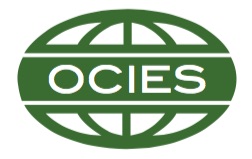Indigenous cartography and cultural ecology in comparative education: Toward transdisciplinary and practice-oriented methodologies
DOI:
https://doi.org/10.70830/iejcp.2401.20903Abstract
In the late 1950s, the cultural anthropologist Roy Rappaport coined the term 'cultural ecology', which has since evolved into an interdisciplinary field exploring the relationships between human cultures and their environments. The field examines how cultural beliefs, practices, and adaptations shape interactions with the natural world.
Through international comparison, this study highlights the interconnectedness of indigenous knowledge systems and the complex yet practical relationships between all life forms, which includes ecosystems and geographical landmarks recognized as legal entities. Within the framework of multiepistemic orientations (Garroute, 1999, cited in Andreotti, 2011) and holistic worldview perspectives, challenges exist in integrating comparative methodologies--- such as Indigenous Cartography as presented in this paper---into an exploration of indigenous practices. Using Kemmis' framework of practice architectures, this study examines how cultural-ecological adaptations are shaped both by the interactions with their respective natural worlds in contextual conditions and aspirational transformations (Kemmis, Nixon & McTaggart 2019; Kemmis 2019; Lave & Wenger 1996; Wenger-Trayner and Wenger-Trayner 2020).
A deeper understanding of humanity's interconnectedness with nature emerges through the careful and sensitive comparisons of indigenous knowledge, ensuring that 'secret' sacred knowledge is not exploited for personal gain or self-grandisement. By exploring ancestral wisdom passed down through generations, this study seeks to demonstrate how the collective indigenous voice can foster cultural ecological stewardship. Acknowledging the historical misuse, appropriation, and exploitation of indigenous knowledge, this analysis underscores the importance and necessity of defending cultural rights while promoting respect for ecosystems, biodiversity, and adaptive resilience.
Key words: cultural ecology, indigenous knowledges, Mother Earth as legal entity, indigenous cartography
Downloads
Published
Issue
Section
License
Copyright (c) 2025 Diana Garcia-Huaman, Brian D. Denman

This work is licensed under a Creative Commons Attribution-NoDerivatives 4.0 International License.
The International Education Journal: Comparative Perspectives is the official journal of the Oceania Comparative and International Education Society. The IEJ, (ISSN 1443-1475), publishes a general volume bi-annually in July and December and also publishes Special Editions occasionally. It is a free, open-access scholarly journal, managed by volunteers. There are no article processing charges, or any charges to authors.
In relation to intellectual property, as of 2020, the IEJ: CP claims only first publication rights; copyright of all work published in the journal remains with the authors under Creative Commons copyright license CC-BY-ND (4.0). Author(s) retain all rights to their works, ensuring that reference to the International Education Journal: Comparative Perspectives is clearly stated on any copies made or distribution. Submissions must not involve third parties with a claim to copyright, and be the sole work of the author(s). It is the responsibility of the author(s) to secure permission to reproduce photographs, illustrations, figures or tables. Single images, tables or figures can be re-used . If more than a single image or table are to be re-used authors must attribute first publication to IEJ: CP notify the IEJ: CP Editor. Authors may also make derivative works which are subject to these limitations.
See https://creativecommons.org/licenses/by-nd/4.0/ for more detail.
Re-distributed or used material must be referenced to the International Education Journal: Comparative Perspectives.
